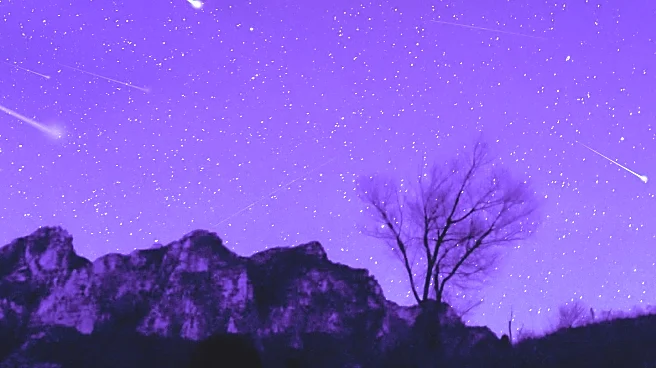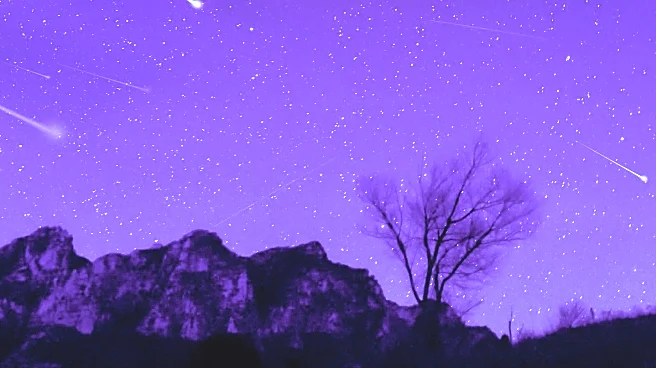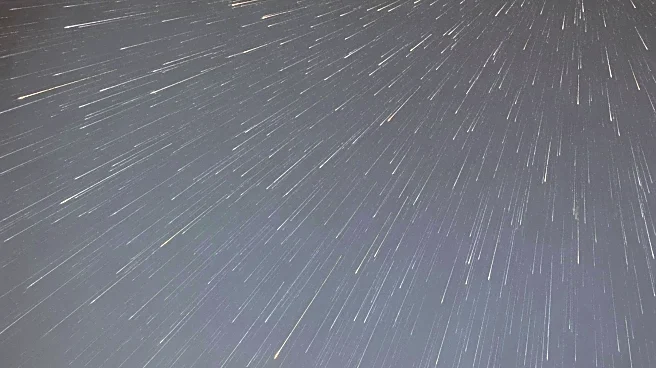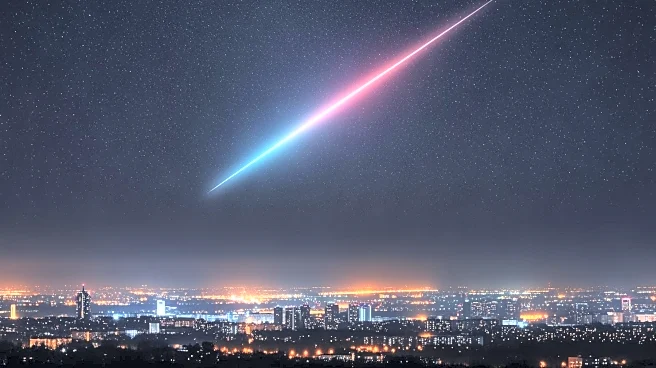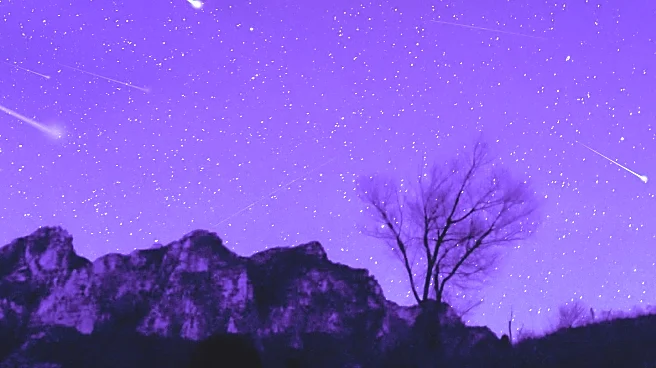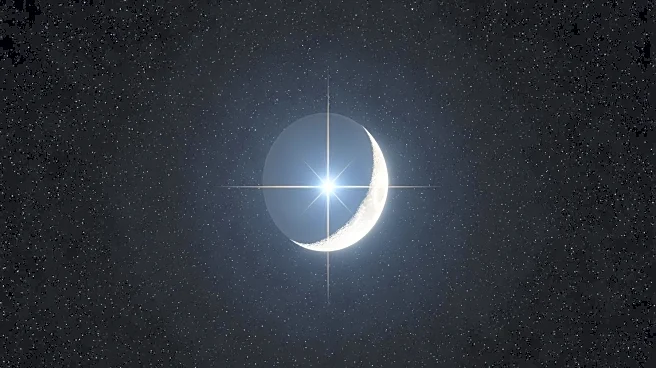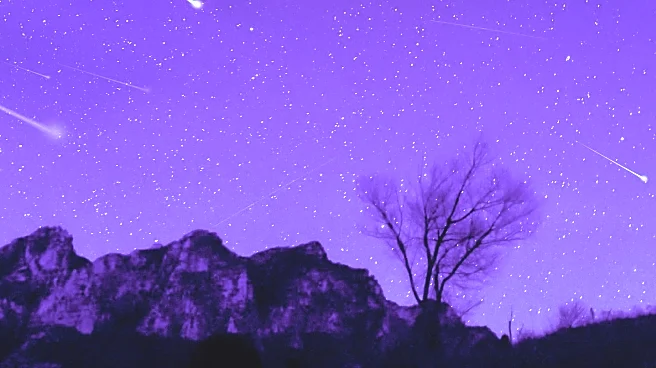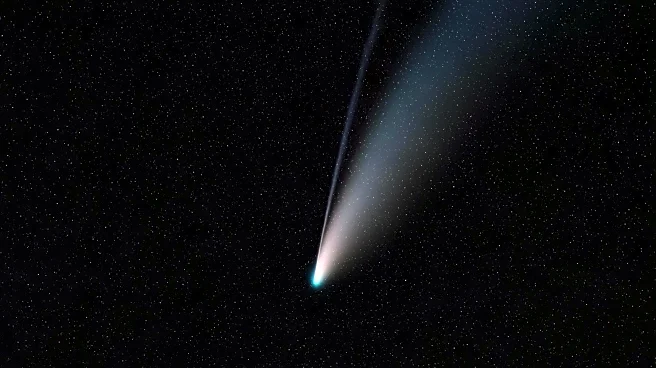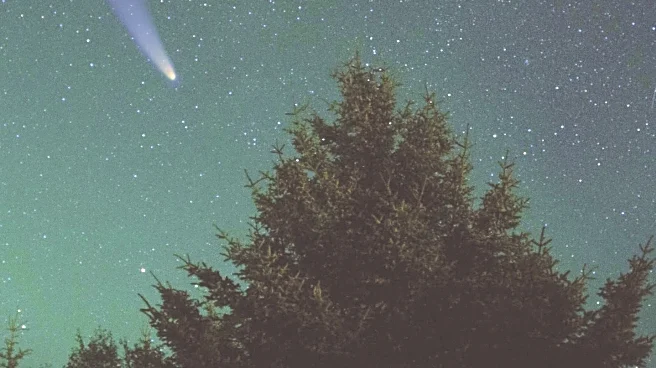What's Happening?
The Orionid meteor shower, originating from Halley's Comet, is set to peak on October 20-21, 2025. This annual event is expected to produce 10 to 20 meteors per hour, offering a spectacular display for
stargazers. The shower coincides with a new moon, providing optimal viewing conditions due to minimal natural light interference. The meteors, known for their glowing 'trains' and occasional 'fireballs,' will be visible across the U.S., with peak activity anticipated around 2 a.m. on October 21. Observers are advised to find dark-sky locations away from artificial light pollution to maximize their viewing experience.
Why It's Important?
The Orionid meteor shower is a significant event for amateur astronomers and stargazers, offering a chance to witness a celestial phenomenon linked to Halley's Comet, which passes Earth every 76 years. The shower's peak during a new moon enhances visibility, making it an ideal opportunity for educational and recreational activities related to astronomy. This event highlights the importance of preserving dark-sky areas to facilitate astronomical observations, which can inspire interest in science and nature. The shower also serves as a reminder of the periodic nature of celestial events and their impact on cultural and scientific pursuits.
What's Next?
Following the peak of the Orionid meteor shower, stargazers can look forward to other astronomical events throughout the year, such as the Eta Aquarids in May, also linked to Halley's Comet. The next appearance of Halley's Comet itself is expected in 2061, providing a long-term anticipation for astronomers. In the short term, observers are encouraged to continue exploring the night sky, potentially leading to increased interest in astronomy clubs and educational programs. The event may also prompt discussions on light pollution and its effects on astronomical observations, advocating for policies to protect dark-sky areas.
Beyond the Headlines
The Orionid meteor shower offers more than just a visual spectacle; it underscores the interconnectedness of celestial events and their historical significance. Halley's Comet, a source of the Orionids, has been observed for centuries, influencing cultural narratives and scientific exploration. The shower's occurrence during a new moon highlights the role of lunar phases in astronomical observations, providing insights into the dynamics of the solar system. This event also encourages reflection on humanity's place in the cosmos, fostering a sense of wonder and curiosity about the universe.
